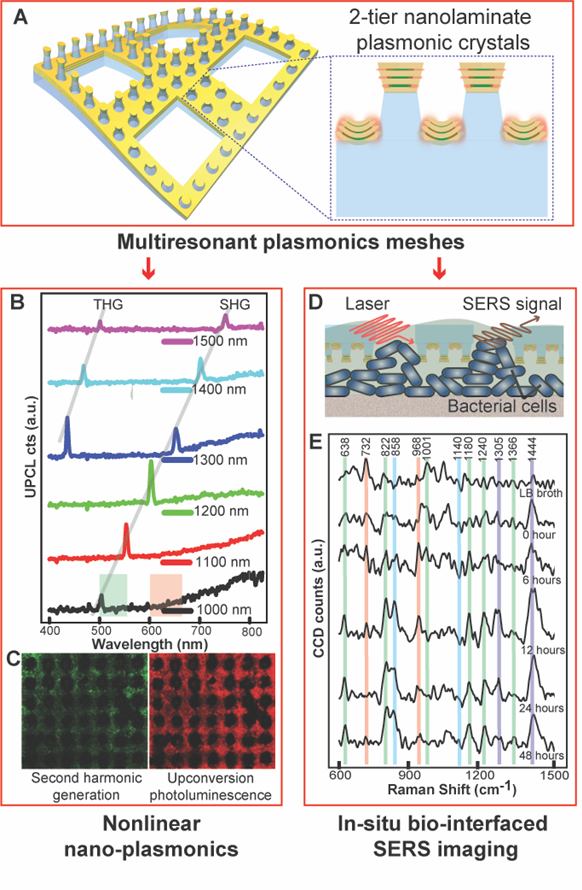THE CHALLENGE
Mesh plasmonic devices have the potential to combine the biocompatibility of polymeric meshes with the capabilities of plasmonic nanostructures to enhance nanoscale light-matter interactions for bio-interfaced optical sensing and actuation. However, scalable integration of uniformly structured plasmonic hotspot arrays with polymeric meshes remains challenging due to the processing incompatibility of conventional nanofabrication methods with flexible microporous substrates.
OUR SOLUTION
This technology puts forth a strategy for the nanofabrication of wafer-scale multi-resonant plasmonic meshes (MPMs) via a cost-effective hierarchical micro-/nanoimprint lithography approach. MPMs can function as bio-interfaced broadband nonlinear nanoplasmonic devices and surface-enhanced Raman spectroscopy (SERS) mesh sensors that enable in-situ spatiotemporal molecular profiling of biological systems. Such devices can open exciting avenues for bio-interfaced optical sensing and actuation applications, such as inflammation-free epidermal sensors, combined tissue-engineering and biosensing scaffolds for in vitro 3D cell culture models, and minimally invasive implantable probes for long-term disease diagnostics and therapeutics.

Figure: (a) Multiresonant plasmonic mesh design, (b) nonlinear scattering spectra, (c) multiphoton imaging, (d) experimental setup, and (e) time-resolved SERS biofilm profiling.